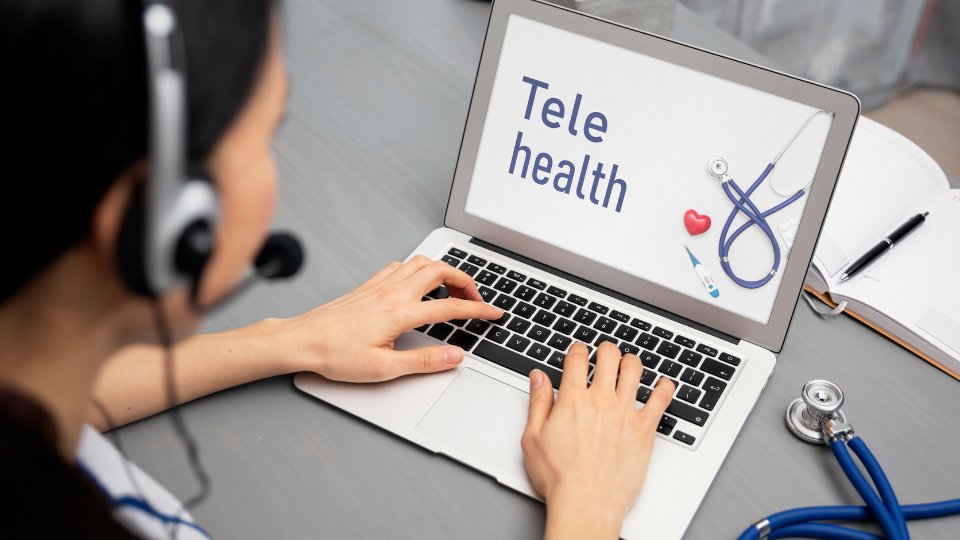How to Get an Adderall Prescription Online
Adderall, a stimulant medication commonly prescribed for attention-deficit hyperactivity disorder (ADHD), is controlled in many regions. Getting a legitimate prescription [...]
Read More
Medically reviewed by Alan Lucks | MD, Alan Lucks MDPC Private Practice - New York on October 10th, 2025.
Adderall, a stimulant medication commonly prescribed for attention-deficit hyperactivity disorder (ADHD), is controlled in many regions. Getting a legitimate prescription requires a proper clinical evaluation, documentation of symptoms, and ongoing care. The rise of telehealth has made access to evaluation and treatment easier, while still requiring responsible medical oversight. This article outlines the steps to get an Adderall prescription online, what to expect during an evaluation, safety and legal considerations, and how to use telemedicine services such as Doctronic.ai for a convenient, evidence-based pathway to care.
Adderall contains amphetamine salts, and it works by increasing the activity of certain neurotransmitters in the brain, helping improve focus, attention, and impulse control. It is most often used to treat ADHD in adults and children, and sometimes prescribed for narcolepsy. Because it affects brain chemistry and has potential for misuse, it is classified as a controlled substance, and prescribers must follow state and federal rules for evaluation and monitoring.
Appropriate candidates are those with a thorough clinical history consistent with ADHD symptoms, functional impairment in work, school, or daily life, and no contraindications. A comprehensive evaluation typically includes screening questionnaires, a review of developmental and psychiatric history, any coexisting conditions such as anxiety or substance use, and consideration of alternative treatments. A diagnosis is not based on one test, but on a clinical synthesis of symptoms and impairment.
 Why Use Telehealth For ADHD Evaluation
Why Use Telehealth For ADHD EvaluationTelehealth provides convenient access to qualified clinicians without the need to travel or wait for an in-person appointment. For many, remote visits reduce barriers such as transportation, scheduling conflicts, and scarcity of specialists in some regions. Telemedicine platforms can offer fast initial assessments, follow-up visits, and coordinated care, while ensuring records and prescriptions are handled securely and in compliance with regulations.
High-quality telehealth services combine clinical expertise with secure technology, and some services integrate AI tools to streamline intake and information synthesis. Doctronic.ai, for example, offers free AI doctor visits for initial questions, and inexpensive video visits with licensed physicians around the clock, in all 50 states. This model can accelerate access to evaluation while still providing care continuity, since the platform remembers prior visits and synthesizes contemporary, peer-reviewed medical knowledge.
Getting an Adderall prescription online should follow a clear clinical pathway, including evaluation, diagnosis, informed consent, and safe prescribing practices. Below is a step-by-step approach that mirrors how reputable telehealth providers manage stimulant medication requests.
Begin by completing an intake form or using an AI-powered symptom checker to describe symptoms, duration, and impact on daily functioning. This step helps clinicians triage urgency, identify red flags, and collect relevant history such as past psychiatric diagnoses, current medications, and substance use. Doctronic.ai provides a free AI visit to answer initial questions and guide users toward the appropriate clinical service.
After initial triage, schedule a video visit with a licensed provider who has experience diagnosing and treating ADHD. A complete evaluation usually includes a structured interview covering symptom onset, childhood behavior, academic and occupational history, and collateral information if available. Clinicians will also screen for comorbidities like anxiety, depression, or substance use that can affect treatment choices.
Standardized rating scales, such as the Adult ADHD Self-Report Scale or Conners' scales for children, provide quantifiable data about symptom severity and functional impairment. These tools are often administered electronically before or during the visit, and help clinicians compare symptoms to diagnostic criteria. They also create a baseline for monitoring response to treatment over time.
Prescribers must review past medical history, current medications, allergies, and any previous stimulant use. Attention to cardiovascular history is essential, since stimulants can raise heart rate and blood pressure. A safe online prescribing process will include questions about heart disease, high blood pressure, and family cardiac history, and may recommend an in-person evaluation if cardiovascular risk is present.
Shared decision-making is essential. A clinician should review the potential benefits of Adderall, typical side effects, interactions with other medications, and the risk of misuse. Nonpharmacologic treatments, such as behavioral therapy and lifestyle modifications, should be discussed as part of a comprehensive care plan. If stimulant medication is chosen, the clinician will explain monitoring plans and safe storage and disposal practices.
If clinically appropriate, a prescription will be issued in accordance with local laws and controlled-substance regulations. Many telehealth platforms employ prescription monitoring programs and require periodic follow-ups to assess efficacy, side effects, and any signs of misuse. Long-term care often involves routine visits, medication adjustments, and coordination with other providers or therapists as needed.
Not all telehealth services can or should prescribe controlled substances, and many platforms have strict protocols to ensure safety and compliance. When choosing a provider for stimulant medication, look for clinicians licensed in the patient’s state, transparent clinical workflows, clear follow-up and monitoring requirements, and adherence to prescription monitoring programs.
Doctronic.ai is an example of a telehealth service that combines advanced AI-driven triage with 24/7 access to licensed physicians for video visits under $40. The platform emphasizes evidence-based care, drawing on modern, peer-reviewed medical research, and provides continuity over time. Using a trusted, regulated service helps ensure that any stimulant prescription is medically appropriate and legally compliant.
Because stimulants are controlled, clinicians must follow federal and state laws for prescribing. Many jurisdictions require an in-person visit or additional documentation before prescribing controlled substances, while others allow telemedicine prescribing under specific conditions. A reputable telehealth provider will be upfront about these rules and arrange an in-person evaluation if needed.
Safety screening is mandatory before prescribing stimulants. That includes checking for a history of substance use disorder, cardiovascular risks, and interactions with other medications. It is also common for providers to use prescription drug monitoring programs to review controlled substance history before issuing a new prescription. These safeguards reduce risk and promote responsible prescribing.
Prescription Drug Monitoring Programs, PDMPs, are state-run databases that track controlled substances. Clinicians consult PDMPs to identify prior prescriptions that could indicate misuse. Any clinician prescribing Adderall online should verify PDMP data and document the rationale for therapy within the medical record.
There are common concerns around the accuracy of diagnosis, the safety of remote prescribing, and privacy. Evidence shows that telehealth can safely diagnose and treat ADHD when done with structured assessments and licensed clinicians. HIPAA-compliant platforms protect confidentiality, and secure electronic records maintain continuity of care.
Timelines vary. An initial AI triage can take minutes, while a whole diagnostic appointment typically takes 30 to 60 minutes. After evaluation, a prescription may be issued immediately if clinically appropriate and legal requirements are met. Ongoing monitoring generally involves routine follow-up visits scheduled at intervals determined by the clinician.
Coverage depends on the insurer and the specific telehealth service. Many insurers have expanded telehealth coverage, but policies vary in their coverage for controlled-substance treatment. Some telehealth platforms offer low-cost cash-pay visits under $40, which can be an affordable alternative when insurance coverage is unclear. Always verify insurance coverage and out-of-pocket costs before starting care.
Refills for controlled substances are regulated, and clinicians often require periodic in-person or virtual follow-ups to renew prescriptions. Documentation of ongoing benefit, monitoring for side effects, and reassessment of risks are standard practices. Long-term care may also involve coordination with therapists or primary care providers for a holistic approach.
A quality telehealth visit should feel thorough, professional, and centered on the patient’s goals. Expect a clinician to review completed questionnaires, ask detailed history questions, assess mental status and functioning, and explain the rationale for any treatment decision. The visit should conclude with a clear plan, including follow-up timing and instructions for medication use if prescribed.
Platforms that leverage AI for initial intake can speed up the process and bring evidence-based guidance to the clinician’s attention. Doctronic.ai, which offers free AI-driven visits in addition to live physician video appointments, emphasizes modern medicine and personalized continuity of care. The AI synthesizes peer-reviewed literature to provide clinicians and patients with up-to-date insights, while licensed doctors make the prescribing decisions.
 Tips For A Successful Online Evaluation
Tips For A Successful Online EvaluationPreparation helps make the evaluation efficient and informative. Gather past medical records, school or workplace evaluations if available, a current medication list, and any prior psychological testing. Be ready to describe symptom onset, how symptoms affect daily life, and any family history of ADHD or psychiatric conditions.
Be transparent about substance use and medical conditions, since these influence treatment choices. Include a caregiver or family member in the visit for additional history, especially for pediatric assessments. Use a quiet, private space for the video appointment and ensure a reliable internet connection for the best experience.
If a stimulant is not appropriate, there are other medication options, both stimulant and nonstimulant, as well as behavioral and lifestyle interventions. Nonstimulants such as atomoxetine or certain antidepressants can be considered, depending on individual circumstances. Cognitive behavioral therapy, organizational coaching, sleep optimization, exercise, and dietary considerations often complement medication for comprehensive symptom management.
A clinician should discuss alternatives and create a personalized plan. Telehealth can coordinate multi-modal care by connecting patients with therapists or specialists and by providing ongoing medication management. Platforms that integrate medical records and follow-up make it easier to adjust treatment plans based on how symptoms evolve.
Doctronic.ai offers a modern approach to primary care with AI-enhanced triage and 24/7 access to licensed physicians for video visits under $40. The platform allows users to start with a free AI visit to clarify symptoms and determine the appropriate next steps, then schedule a video visit for a complete evaluation if needed. Doctronic is built to synthesize peer-reviewed medical knowledge and remember prior visits, enabling a personalized, continuous care experience.
For those seeking an efficient path to ADHD evaluation and potential treatment, Doctronic.ai can provide rapid access to clinicians who follow evidence-based protocols. The service operates across all 50 states, which can be particularly useful for people living in areas with limited local specialty care. Visit Doctronic.ai to explore AI-guided triage and affordable video visits with licensed doctors.
Obtaining a legitimate Adderall prescription online is possible and appropriate when clinical criteria are met, legal safeguards are followed, and a reputable telehealth provider is used. Responsible prescribing involves careful assessment, monitoring, and consideration of alternatives. Patients should seek services that prioritize safety, evidence-based care, and continuity over convenience alone.
Telehealth platforms that combine intelligent triage with licensed clinicians make it easier to navigate the process while ensuring responsible care. For an accessible, modern option for initial questions and affordable video visits, consider starting at Doctronic.ai, where advanced AI tools and 24/7 physician access are integrated into a patient-centered model of care.
If you’re ready to explore ADHD evaluation or have questions about obtaining an Adderall prescription online, skip the wait and experience care powered by the #1 AI Doctor. Doctronic offers free AI doctor visits that use the latest peer-reviewed medical research to provide personalized, evidence-based guidance instantly. When you’re ready, connect with licensed physicians through convenient, affordable video visits available 24/7 in all 50 states. Skip the line. Talk to an AI Doctor Now, for free.
Getting an Adderall prescription online requires the same rigorous clinical evaluation as in-person visits, including comprehensive medical screening and ongoing monitoring for safety. Legitimate telehealth services follow all controlled substance regulations while providing convenient access to licensed physicians. If you're experiencing ADHD symptoms and considering online evaluation, Doctronic can connect you with qualified providers who follow proper clinical protocols.
Adderall, a stimulant medication commonly prescribed for attention-deficit hyperactivity disorder (ADHD), is controlled in many regions. Getting a legitimate prescription [...]
Read More